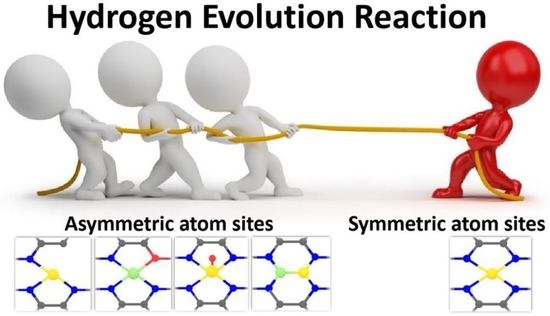A Mini Review: Recent Advances in Asymmetrically Coordinated Atom Sites for High-Efficiency Hydrogen Evolution Reaction
Abstract
Share and Cite
Ding, J.; Liu, W.; Zhang, S.; Luo, J.; Liu, X. A Mini Review: Recent Advances in Asymmetrically Coordinated Atom Sites for High-Efficiency Hydrogen Evolution Reaction. Energies 2023, 16, 2664. https://doi.org/10.3390/en16062664
Ding J, Liu W, Zhang S, Luo J, Liu X. A Mini Review: Recent Advances in Asymmetrically Coordinated Atom Sites for High-Efficiency Hydrogen Evolution Reaction. Energies. 2023; 16(6):2664. https://doi.org/10.3390/en16062664
Chicago/Turabian StyleDing, Junyang, Wenxian Liu, Shusheng Zhang, Jun Luo, and Xijun Liu. 2023. "A Mini Review: Recent Advances in Asymmetrically Coordinated Atom Sites for High-Efficiency Hydrogen Evolution Reaction" Energies 16, no. 6: 2664. https://doi.org/10.3390/en16062664
APA StyleDing, J., Liu, W., Zhang, S., Luo, J., & Liu, X. (2023). A Mini Review: Recent Advances in Asymmetrically Coordinated Atom Sites for High-Efficiency Hydrogen Evolution Reaction. Energies, 16(6), 2664. https://doi.org/10.3390/en16062664








